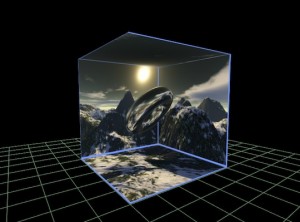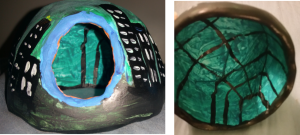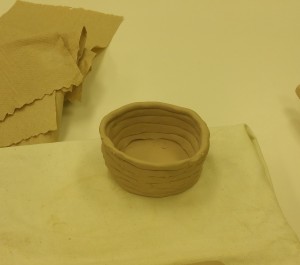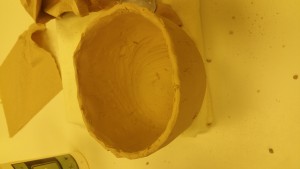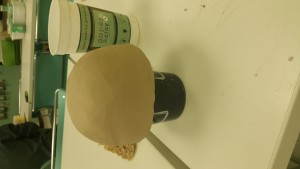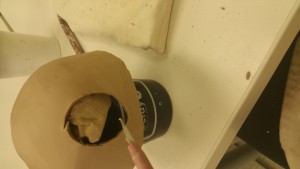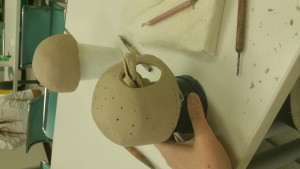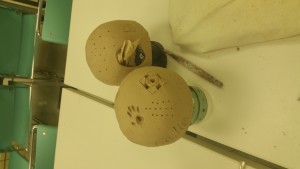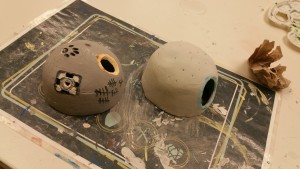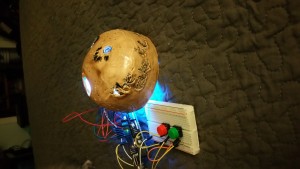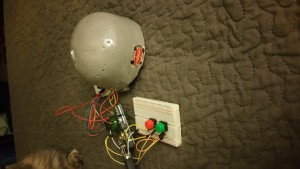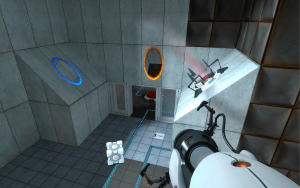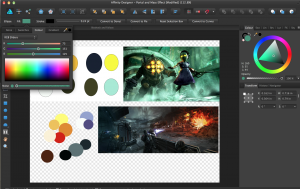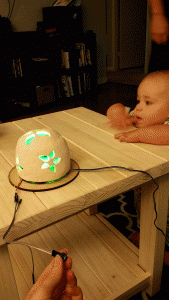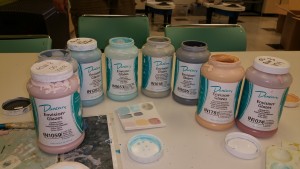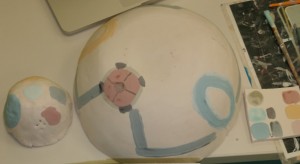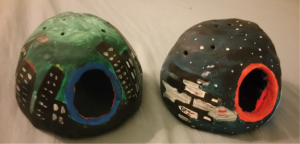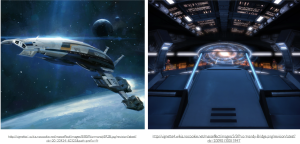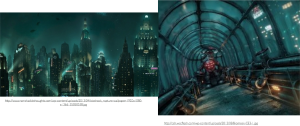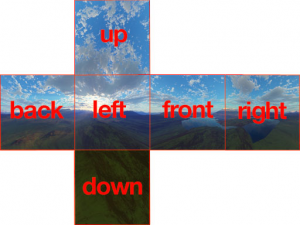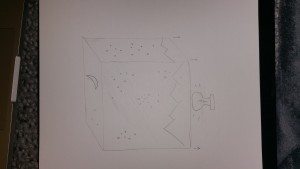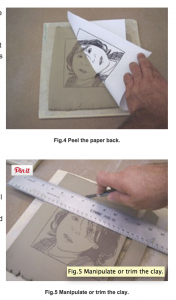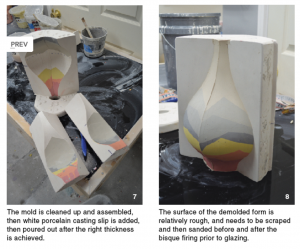Critical Reflection: Portal Interactive Lamp
Thursday, December 3rd, 2015Original Concept
My original concept was to create a ceramic artifact that brings the nostalgia and feeling of “home” from video games into the real world through light.
Previous Iterations
My first concept was to create a physical manifestation of a digital skybox, but after critiques and further thought, it was concluded that a skybox would not contain enough of the “essence” of a game to bring it to life in a meaningful way.
My second concept was to create ceramic domes with a Portal theme, drawing on the game’s core gameplay element – shooting portals on various surfaces to travel through space and time from one portal to the other. The concept was to have two domes, where glazing would represent different areas in the game (interior and exterior), with portals on the inside and outside of the dome, allowing the viewer to be transported inside the dome by looking inside. Due to time constraints, these prototypes were made with epoxy and acrylic paint, rather than clay.
Critiques from the prototyping session led to some design changes for the final product. First, it was suggested that the domes should be more interactive, especially since the video games that inspired the concept (and video games, in general) are highly interactive. It was decided that looking at the light sources to be cast into the domes would be an interesting way to use the portals to transport the user into the games. I also came up with the idea of adding sound as another element to bring the games alive.
Final Product
The final product built off of the previous iteration, and resulted in two domes, and a slightly modified concept. I built two domes to test different facets of glazing. The outside of the domes were carved and glazed to reflect the essence of the Portal game, while the insides were glazed white or clear (matte and glossy, respectively), to allow the lights cast inside the dome to reflect the games.
First, I coil-built the domes, and scraped them to form dome shapes.
Second, I carved them to represent Portal.
Finally, I glazed the pieces to reflect the colors of the game, based on the color analysis done in the previous stage.
Then, the pieces were fired, and I began to build the electronic components.
I used Arduino and Processing to make the lamp interactive. I used buttons to simulate the feel of firing a Portal gun. When the red button is pressed, the LEDs in the lamp transition through colors from an image representing the game Mass Effect, while the theme from the Normandy ship plays on the computer speaker. When the green button is pressed, the LEDs in the lamp transition through the colors from an image representing the game Bioshock.
The images that inspired the exterior of the domes:
The images that inspired the colors of the LEDs (the interior of the dome):
Video
What Questions Does It Ask?
This project exists in the intersection of the digital (video games) and the physical (clay artifact). It asks the questions:
How can physical artifacts created in clay interact with the digital world in the realm of video game immersive experiences?
Does the act of creating an artifact like this, or receiving a handmade artifact like this could bring a more personal feel to a digital and synthetic experience?
For me, I definitely feel a stronger connection to the games through trying to craft an experience to bring the games to life. The objects have a sentimental feeling to me from the time I spent working on them while spending time with my family. I would be interested to see if giving them as a gift would grant that “personal and real” experience to the recipient, and whether that would change his or her feelings towards the games.
What does it achieve?
For me, the lamp brings a real-world interaction experience to games that I had only experienced digitally before. I enjoy the fact that the domes represent a game (Portal) whose essence (traveling through portals to different places) allows me to be “transported” to the worlds of Mass Effect and Bioshock with the press of a button.
What does it not achieve?
I feel like the LEDs in the inside may not necessarily represent the games as well as a projector or a screen inside the domes might have. These other technologies would have allowed actual images or scenes from the game to be projected, rather than colors that represent the design styles of the games.
Inspirations from the Readings
Many of these were discussed in the proposal, but upon building the domes, some quotes came to be more impactful for me.
In the Ingold reading, we discussed the idea of clay or other materials coming into being through the process of the crafter interacting with it, often with the artist not really knowing what it will become until it does. I noticed as I was crafting the domes and carving them, that I kind of became “in the zone,” and wasn’t really consciously planning out how they were going to look or where I was going to carve. I was actually quite surprised by how they turned out.
